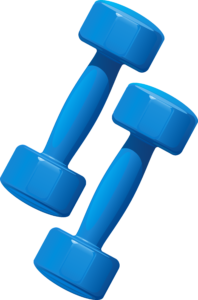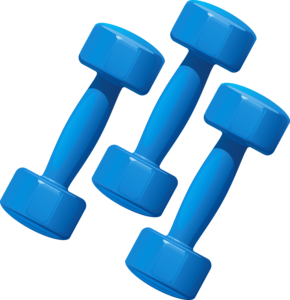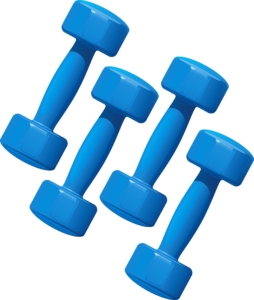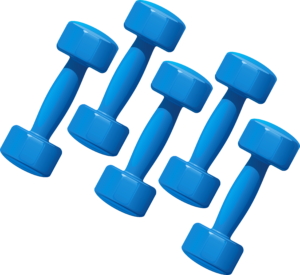Nick Rizzo was determined to motivate his parents to “ditch their sedentary habits and get more active” when they entered their 60s. As director of Training & Fitness at RunRepeat.com, a popular athletic shoe review site, Nick wanted his folks to appreciate the innumerable health benefits of strength training as they aged.
 “Inactivity is extremely dangerous for the 80 percent of adults who shun the physical exercise they need to keep them in good shape,” Nick said. It increases risk for serious health conditions including high blood pressure and cholesterol levels, heart disease, stroke, obesity, diabetes, metabolic issues, depression and death from any cause, he explained. Light walking isn’t good enough.
“Inactivity is extremely dangerous for the 80 percent of adults who shun the physical exercise they need to keep them in good shape,” Nick said. It increases risk for serious health conditions including high blood pressure and cholesterol levels, heart disease, stroke, obesity, diabetes, metabolic issues, depression and death from any cause, he explained. Light walking isn’t good enough.
To confirm the importance of doing more strenuous exercise like strength training as we age, Nick spent hours researching and reading over 200 scientifically backed, peer-reviewed studies. Hopefully, his list of 78 benefits will convince you to stop being a dumbbell, and pick up a dumbbell instead.
In the meantime, here are five key takeaways from Nick’s research:
![]()
Weightlifting is the most effective treatment to prevent, slow down, or partially reverse age-related muscle loss/sarcopenia.

Volunteers from 61 to 80 years old added 2.4 lbs of muscle from strength training and looked an average of five years younger.

Lifting weights helps aging populations reduce risk factors for falls, improve functional independence, functional capacity, and quality of life.

Weight training has been shown repeatedly in studies to reduce a wide variety of general aches and pains associated with aging, as well as many disorder-specific pains.

Exercising only 20 minutes a day reduces the risk of early death by as much as 30 percent, and strength training twice a week reduces the risk of all-cause mortality by 46 percent.
“Strength training exercises work your muscles by applying a resistance against which the muscles need to exert a force.
We want the exercises to be functional movements so that the strength translates into our everyday lives and compound movements that help target the largest and most amount of muscle groups in a single movement,” Nick advised.
A typical beginner’s strength training program involves 8 to 10 exercises that work the major muscle groups of the body. “You start with the basics and slowly work your way up to more advanced variations of an exercise. These exercises are usually performed two to three times every week,” Nick added.
To help get you started on a strength-training program, I asked Nick to recommend the five most powerful exercises and guidance on doing them properly. We covered squats last week. Today, we’re covering pushups.
THE PUSH-UP: NUMBER TWO STRENGTH-TRAINING EXERCISE
While squats address your lower body, push-ups help improve the strength and muscle in your chest, core, shoulders, triceps and forearms. They are tried and true. They are simple, safe and effective.
(Step 1) Before attempting to do full fledged push-ups, take Nick’s advice and begin with wall push-ups, which will reduce the weight on your body. As you’ll see in this easy-to-follow video, you can start by standing straight up and progress by moving your feet further and further away from the wall. (STEP 2) After you’ve mastered wall push-ups, move on to knee push-ups. This well done Mayo Clinic video shows you perfect form. (STEP 3) And, once you’re comfortable with knee push-ups, think about graduating to the traditional full-body push-up. But please don’t overdo it. You surely don’t have to complete as many push-ups as the young woman recommends in this video.

